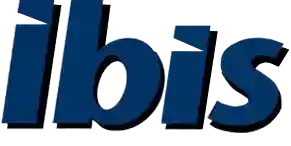Smart-binder Operator Training Course
|
A. Introduction
|
|
| A 1 | Introduction to IBIS and the Smart-binder system |
| A 2 | Distribution of Smart-binder Operator manuals |
| A 3 | Introduction to Safety issues in general |
B. The Smart-binder System |
|
| B 1 | Indentification of all elements of the Smart-binder system |
| B 2 | Glossary of terms used in operating the machine |
| B 3 | Overview of general operation of the Smart-binder system |
| B 4 | Review of the Safety issues related to actual machine operation |
| B 5 | How to start/stop the system |
| B 6 | Running demonstration of the Smart-binder in operation |
| B 7 | Review important factors relating to the presentation of sheets from the upstream equipment |
C. Make-ready Adjustments |
|
| C 1 | Adjusting the Infeed and collator for different sheet sizes |
| C 2 | Adjusting the push out conveyor |
| C 3 | Review safety issues relating to stitcher and trimmer operation |
| C 4 | Adjusting stitching head and clincher positions |
| C 5 | Adjusting backstops and front stops for different book sizes |
| C 6 | Adjusting side knives for different book sizes |
| C 7 | Adjusting trimmer side joggers for different amounts of trim off |
| C 8 | Review operation of delivery conveyor (book shingling and batch marking) |
| C 9 | Carry out make ready adjustments on cover feeder (sheet size and thickness) (If supplied) |
| C 10 | Loading and Saving Smart-binder setup |
| C 11 | Review complete make-ready flow chart |
D. Stitching Head Operation and Adjustment |
|
| D 1 | Review Hohner stitching head operator manual |
| D 2 | Complete stitching head training (view Hohner video if available, how to change wire spools, clear jams, adjust wire length and balance leg lengths, change clincher points, etc) |
| D 3 | Run the Smart-binder with paper and produce stitched and trimmed books |
E. 4th/5th Knife Installation, Setting and Operation (if supplied) |
|
| E 1 | Review safety issues relating to trimmer operation and knife handling |
| E 2 | Fit 4th/5th knife assembly and set to produce good quality trim |
| E 3 | Run the Smart-binder with paper and produce 2-up stitched and trimmed books |
F. Operator Maintenance |
|
| F 1 | Review safety issues relating to trimmer operation |
| F 2 | Carry out knife adjustment to produce good quality trim (if appropriate) |
| F 3 | Lubrication (stitching heads and trimmer) |
| F 4 | Belt cleaning |
| F 5 | Polycord belt changing and joining (if appropriate) |
| F 6 | Cleaning sensors |
G. Fault Finding and Resolution |
|
| G 1 | Review possible book quality problems, causes and rectification |
| G 2 | Review possible paper jam conditions, causes, prevention and jam clearance |
| G 3 | Review fault messages on touch screen |
H. Trimmer and Trimmer Transfer |
|
| H 1 | Review all machine adjustments needed to control finished book quality |
| H 2 | Run the complete system with a range of different book thicknesses and sizes |
| H 3 | Demonstrate that commercially acceptable book quality can be achieved |
| H 4 | Demonstrate that the operator trainees have been adequately trained and are capable of operating the Smart-binder system in a live production situation (run a typical job, at an adequate quality and efficiency) |
| H 5 | Issue training certificates to operator trainees |
J. ISG Gluing System |
|
| J 1 | Overview of Gluing system |
| J 2 | Operation of Gluing system and settings |
| J 3 | Carry out routine maintenance procedures |
K. Cover Feeder |
|
| K 1 | Introduction to the Cover Feeder and optional Autoloader |
| K 2 | Adjusting the feeder for different sheet covers |
| K 3 | Setting the Pile Guides and Pile Height and air and vacuum |
| K 4 | Run the Smart-binder with sheets and covers to produce correctly trimmed books |
K. Off-line Pile Feeder |
|
| K 1 | Introduction to the Pile Feeder and offline oeration |
| K 2 | Adjusting the feeder for different sheet sizes |
| K 3 | Setting the Pile Guides and Pile Height Sensor and air and vacuum |
| K 4 | Run the Smart-binder with paper to produce correctly trimmed books |

